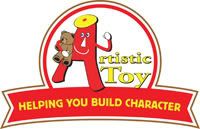One major pain point that could cause frustration for salespeople in 2010 is the February 10, 2010 CPSIA “STAY” or “GONE” decision by the CPC. Many manufacturers and distributors will be lobbying for the CPSIA "STAY" extension that is expiring in February. Every industry discussion group I have attended indicates that the STAY will be GONE effective 2/10/10, which means the full requirements of the law will go into effect.
All Children’s and Child Care products manufactured after 2/10/10 will require an independent laboratory safety report before it is distributed. Products distributed without approved safety reports will be subject to substantial fines. This is important to salespeople who are thinking about selling stuffed plush toys this year. While your target market is clearly designed to reach audiences over 12 years old, the CPSIA may not support that decision if your promotional strategy looks like duck and quacks like a duck, it’s probably a Children’s Product or Childcare item.
Here are a few of things to expect from your trusted industry suppliers:
- Increase minimum order quantities to offset the fixed cost of safety testing.
- Safety testing now a standard component of product unit cost.
- Separate line item analysis for toy safety testing.
- Manage product safety from design to delivery including coordination with testing laboratories.
In order to battle this frustration, Artistic Toy will assist salespeople with strategies and case studies to look beyond the plush toy product and see into the exciting world of Character Marketing (TM). A Character Marketing (TM) campaign will provide salespeople the unique selling proposition to provide reasons to increase order sizes and further substantiating the testing costs. Challenge yourself to have a forward thinking approach to the fact that the STAY is GONE. You can seize this opportunity to discretely raise the bar for your client's advertising campaign. Instead of facing this challenge as a road block, use it as a tool to increase the purchase decision beyond a singular product and look at the broader campaign.
While facing the new safety requirements you should also be aware of some of the other challenges that will arise:
- Increased delivery timing because more samples and approvals will need to be received before products are moved into production.
- Toy Safety testing is required to be performed by an accredited laboratory.
- Every product component must be individually evaluated for testing creating a variable price structure for independent toy testing. On average, prepare your client for spending approximately $1,000 to $2,000 for this testing.
- Pricing for testing varies significantly between accredited safety laboratories.
- Work with a supplier that understands the testing requirements and the design elements of your product so they can explain to your client's legal departments the requirements and negotiate with testing laboratories so you are not overcharged or delayed in production timing.






